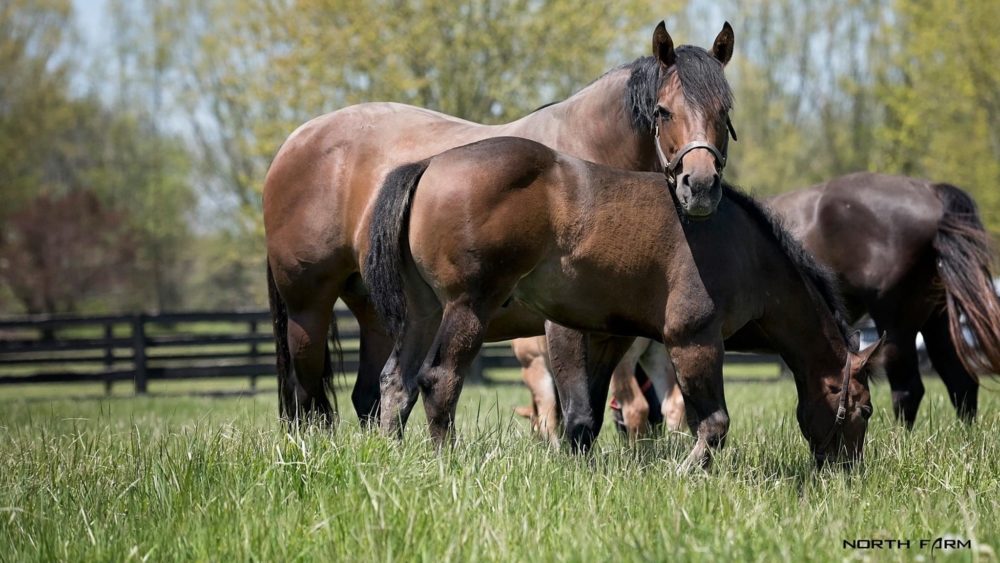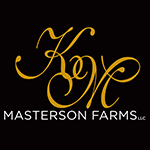Time flies when raising horses. That adorable, leggy colt has grown from an awkward, unsure newborn into a rambunctious, confident young horse, and it’s that time of year to get into…weaning season.
There are two general schools of thought for how to go about weaning a foal: abrupt, quick weaning, and more long-term, gradual weaning. We spoke to some large-scale and boutique top breeders across the industry, including Amy Gumz (Gumz Farms), Debbi Trubee (North Farm), and Linda Ferguson Tacklind (TS Paint Horses), to get some guidance for setting up a successful weaning process that minimizes stress on everyone involved.
Timing is Everything
Breeders will typically wean a foal between the ages of 4-7 months.
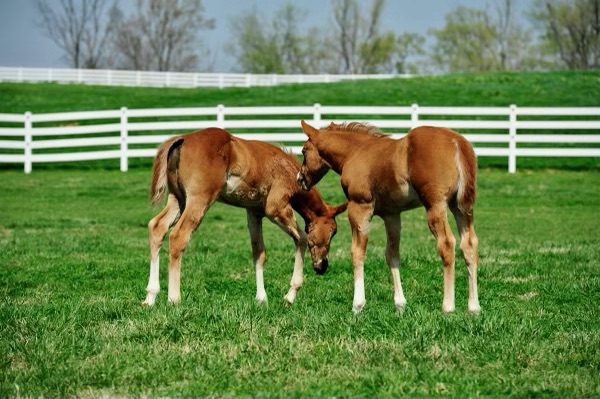 Amy Gumz prefers to wean around four months, saying, “I find they have received ample socialization, education, and nutrition from their dams by this age. However, this date is not set in stone and, if the mare or foal has growth, weight, or medical issues, then the weaning age can be shortened or lengthened.”
Amy Gumz prefers to wean around four months, saying, “I find they have received ample socialization, education, and nutrition from their dams by this age. However, this date is not set in stone and, if the mare or foal has growth, weight, or medical issues, then the weaning age can be shortened or lengthened.”
Gumz believes this timing is ideal because the foal’s immune system has begun to work independently from the dam, and they are easier to socialize with other foals. In addition, the babies themselves tend to be easier to handle at this age, and it sets the mothers up to maintain better body condition, especially if they are back in foal for the next season. She reminds breeders that the mare and foal will start giving you signs when they are ready to wean.
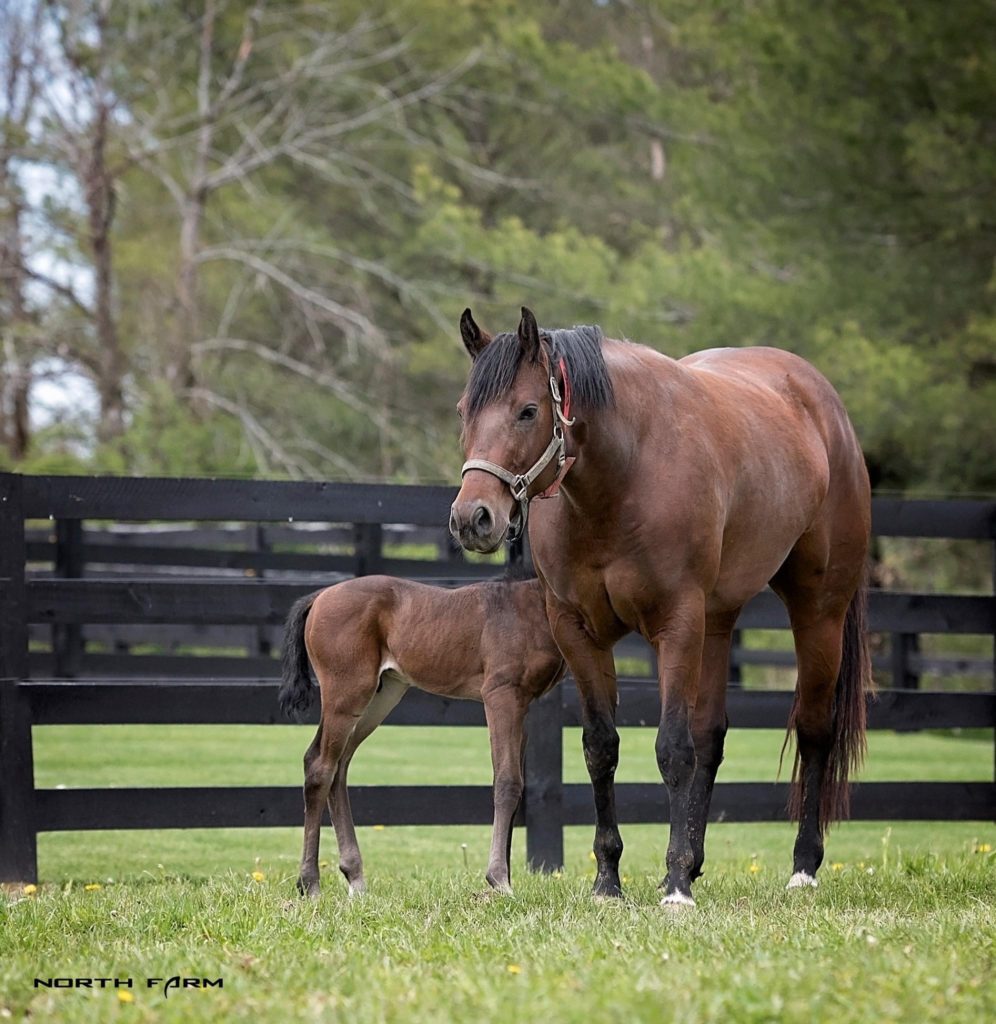 Debbi Trubee believes that the longer the foal can be kept with their dam, the better. She rarely weans before six months of age as she believes that the younger the foal is, the more stressful the experience is for both the foal and the mare. She feels the foal has become far more independent by six months, and the mare is ready for some personal space. Trubee also wants the foals on her property to be fully vaccinated when weaning, which should occur by that six-month timeframe.
Debbi Trubee believes that the longer the foal can be kept with their dam, the better. She rarely weans before six months of age as she believes that the younger the foal is, the more stressful the experience is for both the foal and the mare. She feels the foal has become far more independent by six months, and the mare is ready for some personal space. Trubee also wants the foals on her property to be fully vaccinated when weaning, which should occur by that six-month timeframe.
Additionally, Trubee believes waiting longer to wean is more beneficial for nutritional reasons. In her experience, many weaned horses tend to have a physical “falling off” period where they lose weight and muscle. She believes this is directly related to the fact that young foals cannot actually consume enough calories to keep up their weight. They require their dam’s high protein milk to aid in proper physical development. By waiting longer to wean, the foals on Trubee’s farm tend to continue their physical development post-weaning and avoid the “falling off” experienced by other foals.
In some cases, typically where the mare is older, nursing can really “drag a mare’s body condition.” In these instances, all of our experts will consider weaning sooner for the sake of the mare’s health. In addition, while a mare’s caloric intake must increase post-foaling, some mares still struggle to keep weight on. As such, all of our experts believe this is an important justification for starting the weaning process sooner than later.
Safety First
One of the most critical considerations when weaning a foal is safety. Specifically, weanlings have a decreased sense of self-preservation than many older horses, so ensuring they are housed in safe, secure areas during and after the weaning process is crucial for avoiding unnecessary injuries. Safety fencing, well-kept stalls, a camera system, and/or frequent check-ins are all necessary to ensure a foal’s safety during the weaning process.
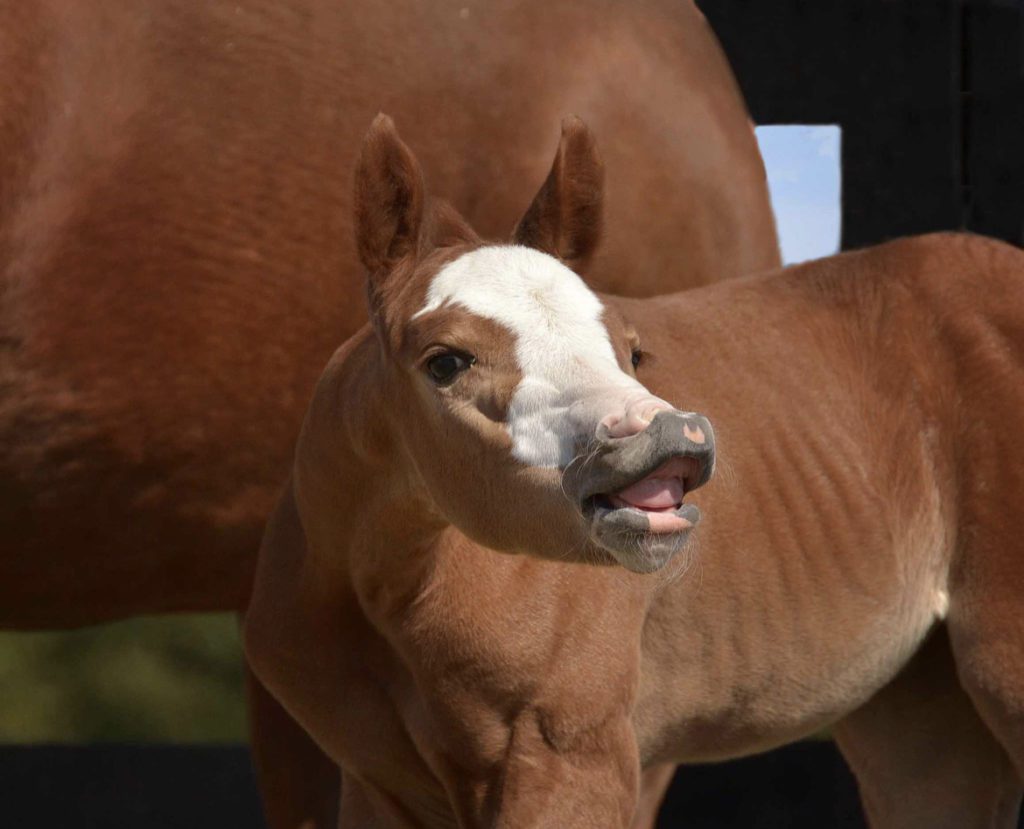 Debbi reminds us that weanlings can be trouble makers, and if there is a way to escape an enclosure easily, they will find it. As a result, a safe and secure paddock is neded to avoid an injury and avoid a loose horse (that will likely be harder to catch).
Debbi reminds us that weanlings can be trouble makers, and if there is a way to escape an enclosure easily, they will find it. As a result, a safe and secure paddock is neded to avoid an injury and avoid a loose horse (that will likely be harder to catch).
Trubee also reminds breeders that the right equipment is important to the safety of the weaning process. For example, she never keeps foals in a nylon halter because they don’t break and could be a recipe for disaster. Instead, North Farm exclusively uses leather halters on weanlings to avoid a situation where they get hung up on something as their necks are more likely to break with a nylon halter.
Have a System
When it comes to horses, no plan is ever guaranteed. However, all of our experts have found the weaning process is far less stressful when you have a system in place, and you commit to that.
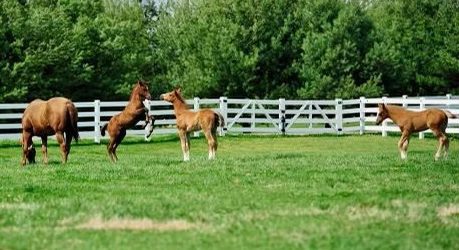 Gumz tries to wean foals in pairs, so they have a buddy during the process. After all, misery loves company. They select weaning buddies based on age, size, and demeanor – they want to make sure there isn’t a bully in the pair that will walk all over the other foal.
Gumz tries to wean foals in pairs, so they have a buddy during the process. After all, misery loves company. They select weaning buddies based on age, size, and demeanor – they want to make sure there isn’t a bully in the pair that will walk all over the other foal.
Additionally, Gumz Farms halter breaks and leads their foals from birth as they have found that the more they are handled, the easier and safer it is to wean them. Given the age at weaning, Gumz prefers a slightly more gradual process. Initially, the mares foal out in a stall, so barn staff can monitor the pair’s well-being. Over time, they will gradually move mares from the foal’s eyesight until they can be moved back to the broodmare pasture without creating too much stress for the babies.
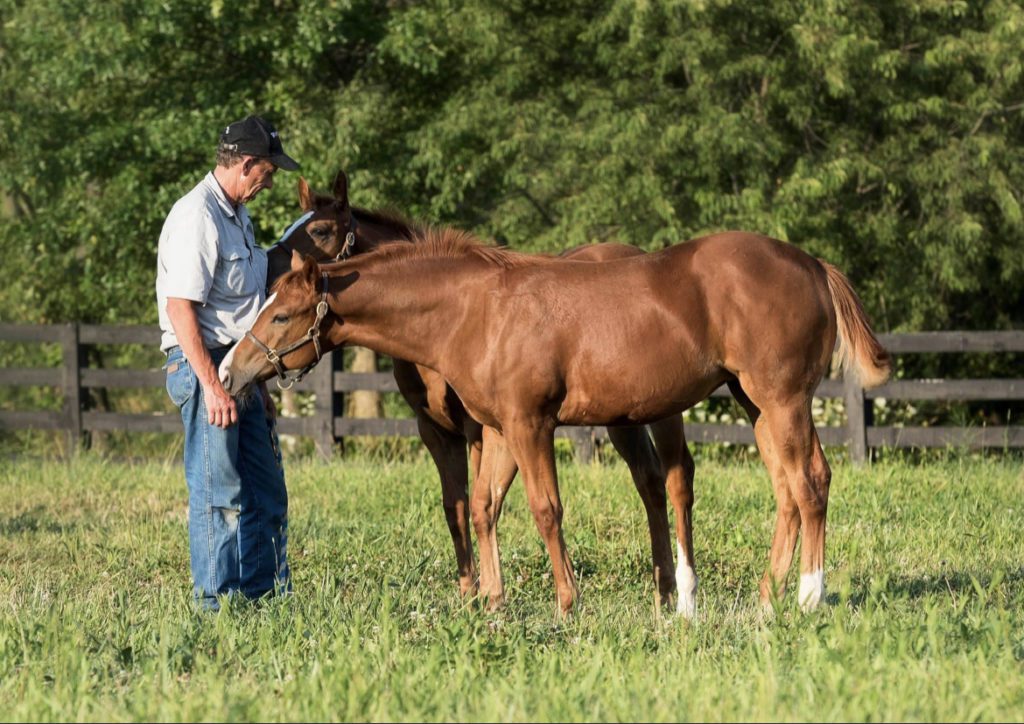 Debbi prefers to use a more abrupt weaning method and believes it is not stressful if the foal is ready for weaning. She likes to pick a timeframe for the weaning and “go all in.” However, horses are herd animals, and she believes strongly in the “buddy system” for weaning.
Debbi prefers to use a more abrupt weaning method and believes it is not stressful if the foal is ready for weaning. She likes to pick a timeframe for the weaning and “go all in.” However, horses are herd animals, and she believes strongly in the “buddy system” for weaning.
Like Gumz, Trubee weans in pairs and will wean same-sex babies in a process where they are kept in a stall together for 4-5 days, and then they get turnout time together as a bonded pair. Babies are then turned out in fields in larger, same-sex groups for wintering together.
Build a Weaning Program that Meets Your Individual Capabilities
At the end of the day, the weaning process should minimize stress on the animals. Still, it should be tailored to the management abilities and the facility capacity of the breeder.
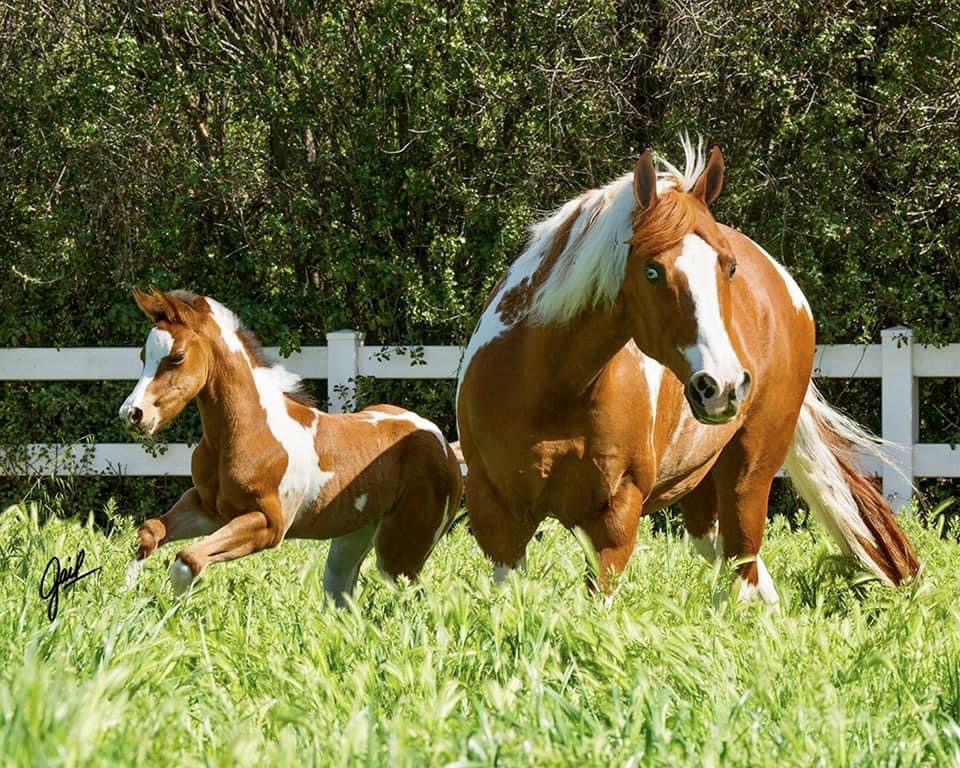 Tacklind, along with her daughter Melissa Sachs, is a leading APHA breeder specializing in producing 1-3 world-caliber foals per year. Tacklind is located in California and, due to limited space, does not have the facility to keep a large herd or produce a large number of foals, which takes away her ability to use a “buddy system” for weaning. As such, she has built a weaning program that works to reduce stress on her mares and foals, but is easily manageable for her to undertake on her own in her backyard.
Tacklind, along with her daughter Melissa Sachs, is a leading APHA breeder specializing in producing 1-3 world-caliber foals per year. Tacklind is located in California and, due to limited space, does not have the facility to keep a large herd or produce a large number of foals, which takes away her ability to use a “buddy system” for weaning. As such, she has built a weaning program that works to reduce stress on her mares and foals, but is easily manageable for her to undertake on her own in her backyard.
Tacklind prefers a slow approach to weaning and actually begins the process when the foal is around 3.5 months old. First, she separates the mare and foal during feeding to see one another, but eat separately (one in a stall while the other is in an attached paddock). This allows the foal to gain confidence while separated from its mother and gives the dam a moment to eat in peace. She continues this and gradually increases the separation time (while allowing the mare and foal to spend most of their day together without ever separating them through the night).
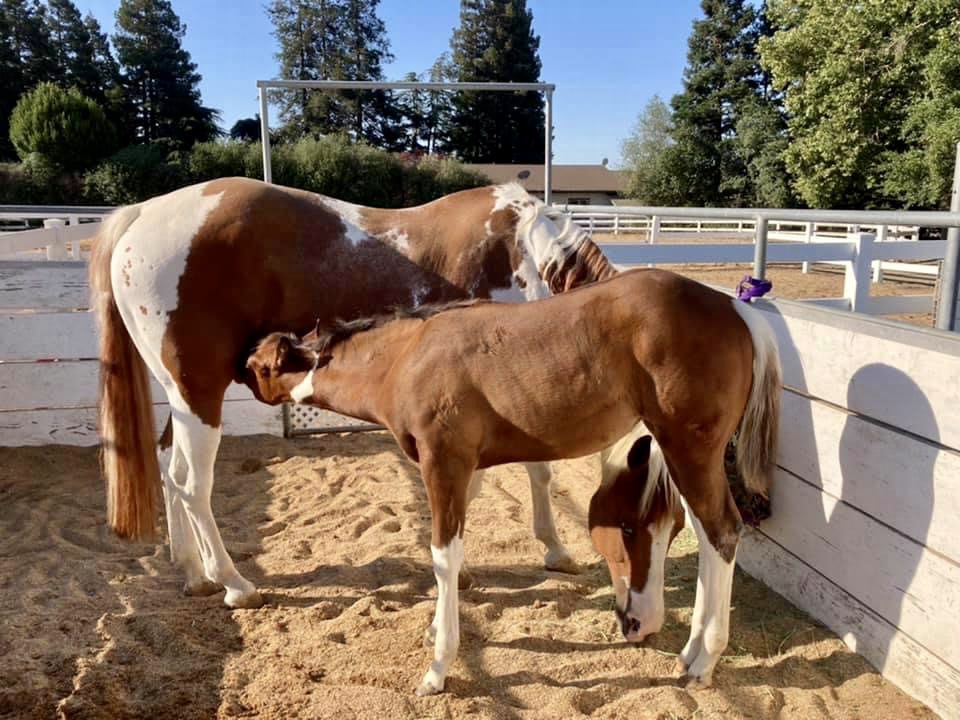 Linda will begin keeping the mare and foal in separate, but immediately adjacent paddocks during the day at around four months of age. This allows the foal to nurse through the fence, but it can no longer nurse on demand. She says this is ideal for her because her mares are older, and nursing takes a lot off of them, but it is also useful for only having one foal per year.
Linda will begin keeping the mare and foal in separate, but immediately adjacent paddocks during the day at around four months of age. This allows the foal to nurse through the fence, but it can no longer nurse on demand. She says this is ideal for her because her mares are older, and nursing takes a lot off of them, but it is also useful for only having one foal per year.
Tacklind finds that when foals lack like-aged playmates, they tend to nurse more frequently out of boredom, which can tax the mare. By allowing the mare to control when she nurses the baby through the fence, she finds the foals become more independent, and the mares keep better body condition.
Finally, Tacklind ends the process at around 4.5-5 months of age when the mare is taken to her daughter’s facility down the road while the foal remains behind.
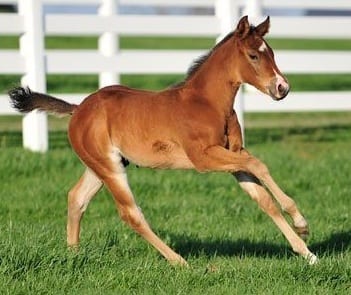 While this process is admittedly more drawn out and involved, Linda has found that her mares and foals barely flinch when they’re finally separated. In addition, her foals continue to keep good weight throughout the process without becoming too demanding on her mares.
While this process is admittedly more drawn out and involved, Linda has found that her mares and foals barely flinch when they’re finally separated. In addition, her foals continue to keep good weight throughout the process without becoming too demanding on her mares.
***
All of our experts have run successful breeding operations of varying degrees for many years with foals that have gone on to earn numerous titles at the top levels of their breeds. While their programs vary to fit their management styles, all emphasize the importance of the animals’ safety, timing, and health. The goal of the weaning process is to create a program that works and stick to it. Weaning can be demanding, but when done with these considerations at the forefront of the process, stress can be minimized for everyone involved.


